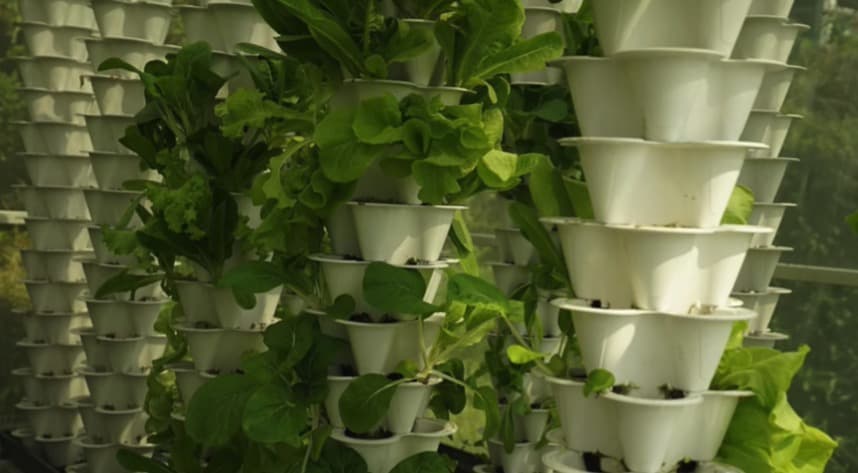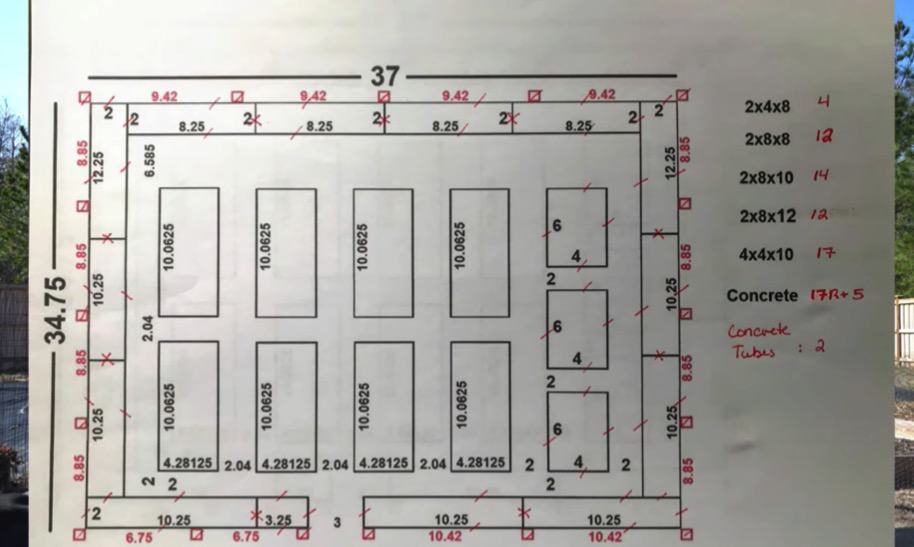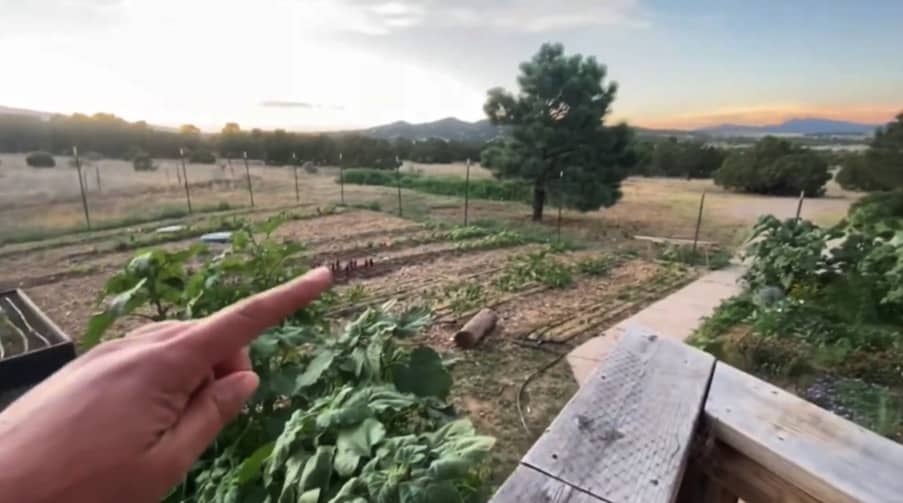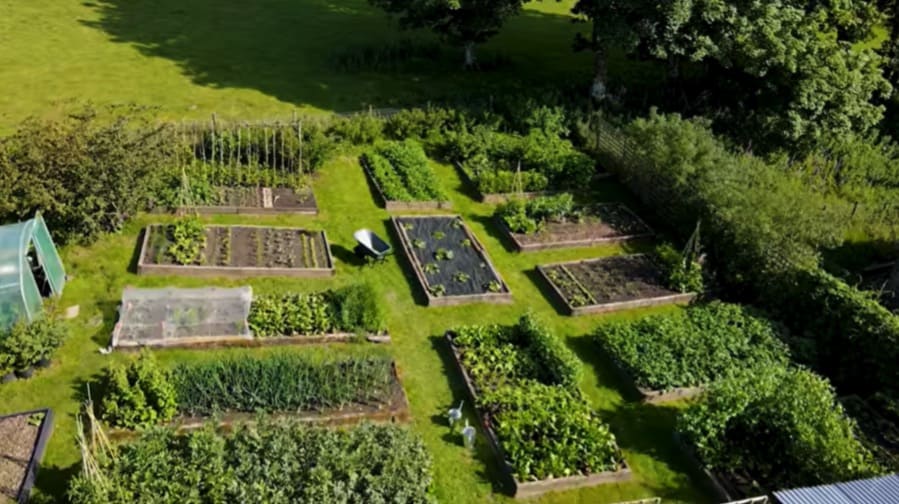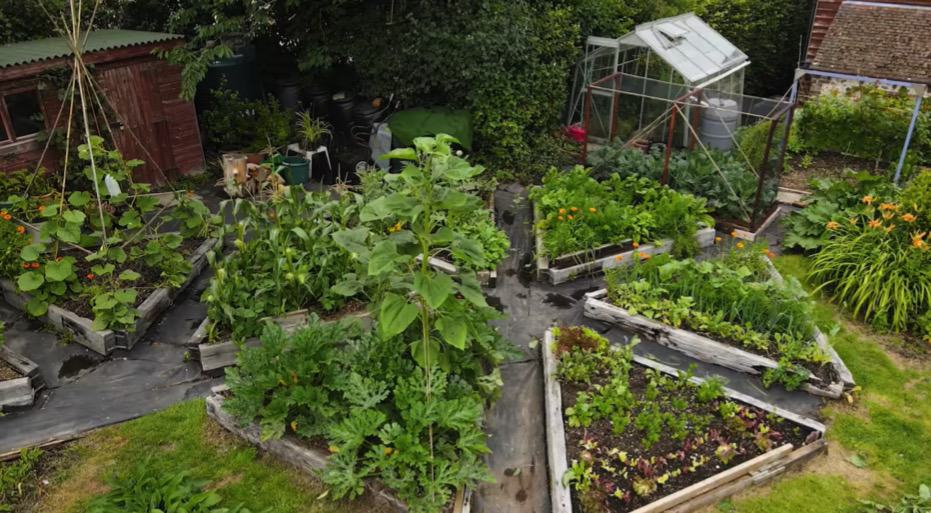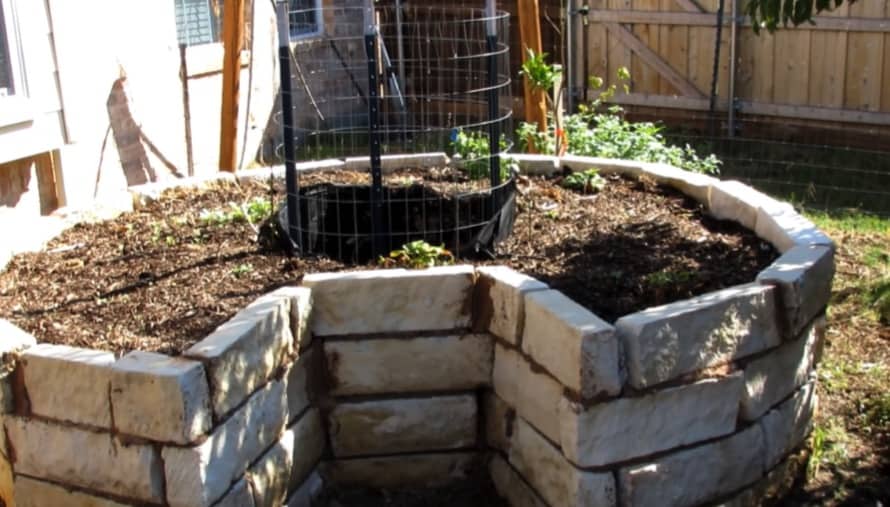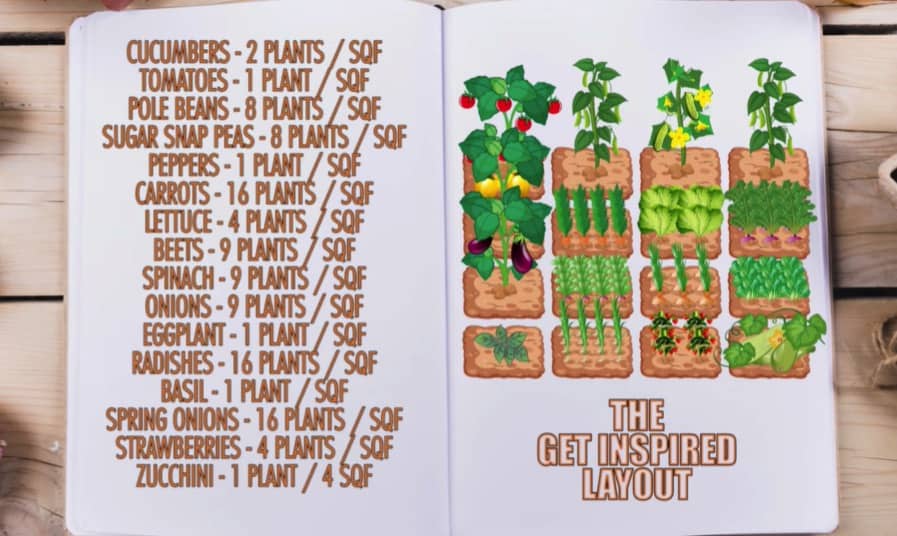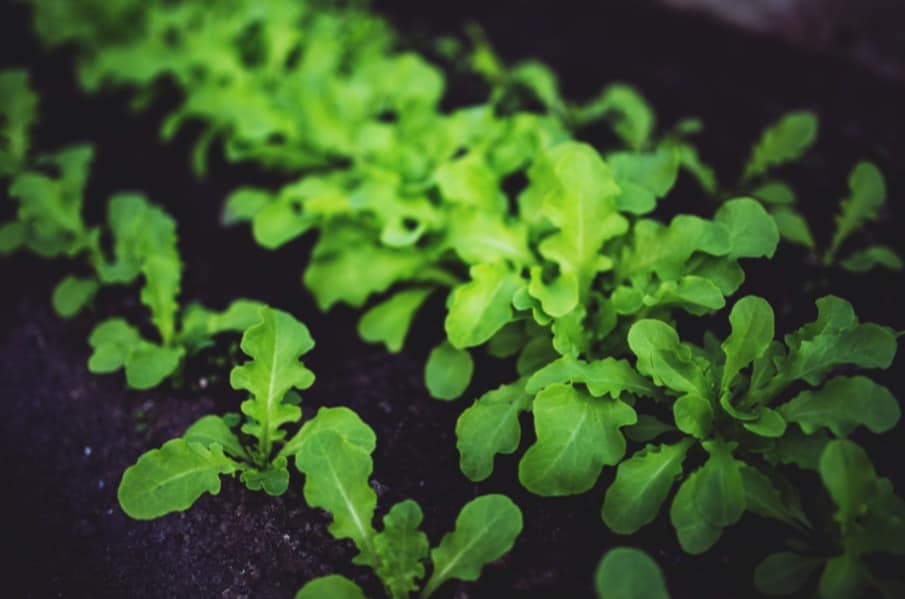Survival Garden Layout

-
Save
Share this article: Bugoutbill.com is independent – we research, test, and rate the top products to help you make the right buying choice. We sometimes use affiliate links and may receive a small commission on your purchase. Learn more…
Sure, we love some good post-apocalypse movies. But what if everything collapses tomorrow… including the grocery shelves?
If you’ve been thinking about starting your own survival garden but are still unsure if you can actually do it, this guide is for you.
Today, we’re going to serve you different survival garden layout to fit your space as we also explore:
- The things you should consider when choosing the best survivalist garden layout;
- What crops to grow;
- The materials and guides you will need;
- Lots more!
Introduction
According to the national nonprofit organization Healthcare Ready, about 65% of Americans expect that a major disaster will impact their families and households in the next five years.
The kicker?
50% of them don’t have an emergency plan for when that happens.
So what if all the grocery shelves were emptied tomorrow and your house is left with an equally empty cupboard? What if your life would then be dependent on growing your own food?
With all the disasters and unexpected catastrophes happening in the past few years, more and more people are going back to the basics to make sure they’re perfectly self-sustainable even in the harshest of times.
And that’s where a survival garden comes in.
Table Of Contents
Table of Contents
A survival garden is not your average traditional garden.
Survival gardens are made to provide you with calorie and nutrient dense vegetables and fruits to sustain you and your family when disaster comes and there isn’t any food to be gotten from the market.
It’s also the perfect backup for when you’re stuck at home because of war, terrorist attacks, or a pandemic.
In addition to that…
You can also choose to make a medicinal survival garden instead, to back you up when the time comes when you can’t go out to go to the pharmacy.
So where do you start?
Well, after preparing your soil and your space, it’s vital to decide which survival garden layout you will use.
And you don’t just randomly choose one, but instead, you study each layout to determine which one works for you, your goal, and your space.
Take this:
Everyone can set their own survival garden.
Living in a compact NYC apartment? In a condo? Or in a rural area with lots of space to spare?
There’s something for you here because everyone can definitely grow their own food!
Read on to see what survival garden layout fits your place and after this list, make sure to continue reading for the best tips and tricks for a good survivalist garden!
Ready to grow?
Game on!
Recent posts
Categories
1 - Container Garden
This actually isn’t a layout, but I’d like to start the list with the simplest one and one that everybody can easily pull off, especially gardening beginners.
It’s a humble container garden.
A container garden consists of plants growing on, well, a container. This is perfect for people who are limited to a small yard, a balcony, or a small patch of sunlight on their yards or driveways.
So what’s so great about survival gardening in containers?
Aside from enabling you to grow your own survival garden crops in a small space, it can also give you a chance to grow more types of crops.
Imagine harvesting about 50 plants from an area of around 4 square feet? Yes, you can!
One of the many ways to do that is to maximize all the space you have by planting in containers that you can rest on the ground and in the air.
Container survival gardening lets you grow plants on your containers on the ground and on containers that you can hang, too!
So how do you start a container garden?
First and foremost, you’d want to choose the best container for your little garden. Make sure there’s good drainage because you don’t want your plant’s roots to become soggy. That will most probably cause them to die.
What if you can’t find a container with drainage?
One of the best things about container gardening is that you don’t have to spend much time setting it up. As a matter of fact, you can even use old containers such as cans, old cups, and plastic containers you can find at home.
Then you can just drill the holes for drainage yourself or line the bottom with stones or broken terracotta…it’s up to you!
How about the size?
While you definitely have free rein when it comes to the containers you will use, let me tell you that a bigger container is more preferable to small ones as it will give the plant’s roots to grow and expand.
Now, if you want a fool-proof container that will give you maximum yield and space…
I recommend getting a garden tower or stackable planter for a boast-worthy vertical garden!
I used this 5-tier stackable planter when I was living in a condo with only a balcony to spare and one tower let me harvest 15 plants at a time.
Yes, 15 different plants.
This is ideal for planting nutrient- and calorie-dense fruits that are rich in essential vitamins such as strawberries or blackberries. I’ve actually planted strawberries in this and to my surprise, they thrived however small each container looked.
Moreover, it can also accommodate bean plants and leafy vegetables such as Kale, Spinach, and lettuce which are rich in nutrients to fortify your family in dire times.
In addition to this…
You can also use this vertical tower planter to grow medicinal plants and herbs such as chamomile, ginger, basil, thyme, rosemary, oregano, and many others.
Each container also has its own drainage holes that let the excess water from the top container trickle down to the rest below to keep the garden soil moist but not too watery.
One thing you want to remember in container gardening is to make sure your plants are getting enough sunlight as most plants require 6 to 14 hours of exposure to sunlight to be able to thrive.
To jumpstart your container survival gardening journey, I recommend you get this guide which was the first one I’ve ever used when I was starting out.
Apart from the basics of container gardening and useful tips in selecting the perfect containers, this guide also has a great plant profile to give you a lowdown on the best plants to grow.
Related: Best Survival Books
2 - Raised Beds
A raised bed is simply a mound of soil sitting on top of the existing soil. It can be surrounded by different types of fences or borders and it can also be of different heights.
So what’s the deal with raised beds?
There are numerous benefits to having a raised fruit or vegetable garden.
One of these benefits is the ability to control the garden soil your plants will grow in. This is very beneficial especially if the surrounding soil is bad. While some people prefer to turn the soil, you can also just dump a good mix on top of it if you want to save more time and energy.
In addition to that, you’ll also be able to contain your precious compost and fertilized soil in one place as opposed to an open space where the soil can get washed away, get trampled on, or spread around.
A raised garden bed will also keep your vegetable crops from drowning during the rainy season.
As if this isn’t enough…
Many people also prefer to set up a raised garden bed for easy access especially if you have elderly or disabled people at home. This makes inspecting the beds much easier because you won’t have to bend very low into the ground.
You can either put a fence around your raised survival garden or just leave them as they are.
Now, if you’re planning to install fences, make sure to remember to leave the bottom open to let your plants have contact with the ground, giving them bigger room to grow and establish roots.
In case you’re wondering…
You can also make a raised survival garden in a small backyard!
Most people opt for a 4 x 8 feet raised bed. One thing you’d want to remember when maximizing a small space for a raised survival garden is to organize good companion planting.
Companion planting is close planting different plants that help each other grow and thrive while also keeping pests out.
For example: You can plant garlic and onion beside a leafy green such as cabbage or broccoli as their strong scents are good for warding off pests.
Raised survival garden beds are also mostly preferred for planting pantry staples such as spinach kale, carrots, leafy greens, and even root vegetables like sweet potatoes and beets.
This easily makes elevated beds a great survival garden layout.
As a matter of fact…
A 4 x 8 feet area can generate over 120 pounds of harvested goods for you and your family.
Now, it’s also a known fact that building your own raised survival garden can be difficult and expensive. Just how true is it?
Well, setting up your own can be more expensive than other gardening layouts, especially if you’re planning to install a fence or a frame.
Metal frames used to cost about $100 and up but thankfully, these days, you can get more affordable ones.
Or you can also get yourself a good dependable guide to raised survival gardening like how I did. I got the Raised Bed Gardening Compilation for Beginners and Experienced Gardeners by Peter Sheppered and it was instrumental in letting me familiarize myself with the basics of raised gardening.
Moreover…
Unlike other gardening books that I first got, this one considers and answers different isolated scenarios that you might encounter when starting out your garden and it proved to be an immense help.
Related: Best Survival Backpack
3 - Homestead Layout
A homestead survival gardening is all about making the most out of the surrounding land around your house.
It also usually involves not only growing different plant species but also raising animals such as chickens, goats, or cattle.
In short, it’s all about self-sustainable living, making it a great survival garden layout. Another idea behind it is also mainly for survival, to feed the people living there for a good number of days.
Homestead gardening requires a bit more planning than other gardening layouts so it’s perfect if you’re an eager strategist.
But then, you can always simplify homesteading if you want.
A homestead usually consists of nut trees, fruit trees, and perennial plants such as banana trees, berries, apple trees, and mint among many others.
The large variety of plants that you can plant and harvest in a homestead makes it an intimidating layout for some new gardeners.
That’s why…
One of the first steps you’d want to do is to plan out the plant groups that you want to have in your homestead.
You may want to consider the fruits and vegetables that your family usually likes to eat, or you can start with vegetables that are recommended for your region or area.
Then you can also map out the heat zones in your land. Know what plant will thrive in a certain area and when is the best season to plant them.
Now, remember…
Starting big rarely ends up successful. Don’t hesitate to start with small seedlings.
Not only will it let you warm yourself up to the great task awaiting you in your homestead but it will also let you observe how a plant can either thrive or struggle in that particular garden plot.
But what if I live in an apartment or an urban setting?
Ideally, a homestead is done in rural and farm areas. But time’s a-changing and everything is now possible, including homesteading!
As homestead survival gardening is all about getting the most out of the land you have, you can definitely have your own little homestead by maximizing your balcony and window spaces with pots and beds of herbs or even plant beans.
As for your crops, heirloom seeds are also very much recommendable, especially those that aren’t readily available in your local store or market.
In case you’re wondering…
What plants are the easiest to grow on a homestead?
Both winter and summer squash, snow peas, green beans, bush beans, sweet corn, nuts, radishes, leafy greens such as Pak Choi and lettuces, radish, strawberries, potatoes, quinoa, tomatoes, chives, and even soybeans will make a good food forest out of your homestead.
Building a survivalist homestead is a process and a worthy one at that, and you’d want the best help that you can get. That’s why I highly recommend reading as much as you can before mapping out your plans.
If you want a one-stop guide to keep you from spending too much time browsing endlessly on the internet and patching up different articles and guides, I suggest you get the 40 Projects for Building Your Backyard Homestead: A Hands-on, Step-by-Step Sustainable-Living Guide book to help you jumpstart your homestead planning.
It has all the nitty-gritty of starting a homestead as well as steps and tips in building your own garden structures.
Related: Best No Touch Tools
4 - Victory Gardens
If you’re serious about making a perfect survivalist garden, I’d say there’s nothing better than a tried and tested layout. In fact, this one was used as an actual means of survival in World War II, hence the name Victory Garden.
The Victory garden concept was first used during WWII when women and those left at home were encouraged by the government to plant their own food not only to help stabilize the shortage of food in the country but to take some pressure off the government for food rationing.
Plus, it also helped to boost the morale of everyone because the people who were left at home were only too glad to contribute anything!
That being said…
Today, Victory survival gardens mean yielding large volumes of fruits and vegetables quickly and efficiently.
It’s also important to note that these foods being grown should be high in calories so they can provide you and your family energy to get through the day when disaster comes, much like MREs.
In selecting the best location for your Victory survival garden, it’s best to choose a garden space with well drained soil but isn’t soggy.
You’d also want a patch where sunlight usually hits as most fruits and vegetables require long hours in the sun to be able to grow.
In case you might be wondering…
What are the best crops to plant in a Victory fruit and vegetable garden?
Well, you’d want to look into fruits and vegetables that are not only rich in essential vitamins and minerals but are also versatile plants that people usually eat.
These include the common leafy veggies such as kale, spinach, lettuce, swiss chard, and cabbage, as well as beans for carbohydrates such as bush beans and even peas. And we can’t forget the usuals such as carrots, onions, garlic, and herbs.
Aside from these…
You can also plant fruits that are equally dense in calories such as berries, grapefruits, or avocados.
Now, if you don’t mind waiting, you can definitely plant some trees too, with variants that grow within 3 to 4 years. Remember to plant bushes such as berries in a row near the trees before the rows of other plants.
The kicker?
This layout is one of the most recommendable for amateur gardeners who prefer a simple plan that’s not so very high-maintenance. This is for you if you’re finding it hard to decide on what plants to grow.
For a more concrete guide, consider getting one of the best books about Victory planting out there, the good old Crockett’s Victory Garden with its step-by-step explanations as well as tips about the best growing season for each plant and many more.
5 - Medicinal & Healing Survival Garden
If we’re talking about ultimate survival gardens then we shouldn’t forget the medicinal plants.
It wasn’t an uncommon thing for people to craft their own first aid solutions or medicinal drinks in the olden times and in times of disaster or crisis, you’d thank yourself for having your own medicinal herbs with healing qualities right there in your backyard!
One of the things to remember…
Is to check first which medicinal herbs can actually grow in your area. Check the hardiness of your prospect plant first.
Then you’d want to plot out your survival garden.
About 4 herbs can fit in a square foot space. But if you want to be sure, see the packet the seeds came with. They should have instructions regarding the row spacing requirements of each plant.
You could plant the common herbs beside each other and then plant the lavenders along the edge of your garden and the minty herbs along the other edge.
Now, about the beds…
You have the choice to either plant in raised plots or in simple rows.
Both will require a significant amount of effort. A row garden will require you to till the soil first and add the necessary nutrients after weeding.
On the other hand, a raised plot will require you to buy materials for the frame as well as mixed soil but then you’d be able to rest easy knowing that your herbs are safe from drowning as well as pests and possibilities of being trampled.
In addition to this…
In determining the herbs that you’ll grow in your medicinal survival garden, you might also want to consider your usual healing needs.
If you’ve been using herbal medicine before, you can also go through your medicinal cupboard and see which ones are helping you the most and see if you can grow them!
But then…
You’d also want to make sure you have the most basic ones in your arsenal.
The most common plants for their antibacterial properties are garlic, Calendula, Oregon, lemon balm, oregano, marshmallow root, licorice, and many more.
Basil is also good for wounds, as well as aloe vera, comfrey, and bishop’s weed while chili peppers, coriander, and fennel help as pain killers.
If it’s your first time dealing with a medicinal survival garden, you’d do yourself a favor by getting a good old guide to medicinal gardening to give you an idea of what to plant. Rosemary Gladstar’s Medicinal Herbs: A Beginner’s Guide helped me when I was just starting out on my own.
6 - Permaculture Food Forest
Permaculture gardening is building a food forest organically in an all-natural setting and letting them thrive without much effort.
This is the best survival garden layout if you already have an existing group of plants and trees on your land.
When starting out a permaculture food garden…
You’d want to carefully and meticulously observe your environment first to see what kinds of plants would thrive in it. Again, it’s important to know if the plants you want to grow will actually fit in your area.
Pre-existing trees are good as a living trellis for your new plants, and they can also shade the smaller plants that are sensitive to too much sunlight.
You’d also want to familiarize yourself with the insects and small animals that inhabit your area.
In this setting, you’d want to layer the tall plants first (they could also be trees) and then the shrubs, and finally, small herbaceous plants as a ground cover while they’re also being shaded by the trees and the shrubs.
Permaculture survival gardens are made with the goal of providing food to its people for an indefinite amount of time while needing very little maintenance.
Because of this…
A raised kind of bed is most recommendable as the soil will stay contained and intact so you won’t need to refill or fix them every so often.
Permaculture sure needs lots of planning so you’d do well to do your research first. Sepp Holzer’s Permaculture: A Practical Guide to Small-Scale, Integrative Farming and Gardening is a straightforward and practical guide to permaculture for beginners minus the very dry scholarly tone some guides tend to have, so you’re sure to be ready for some food forest gardening just after around a week of reading it!
At least, I was.
7 - Keyhole Garden
A keyhole survival garden is a patch of a raised planter but in a circular shape with an entrance, giving it the appearance of a keyhole. Some people also call it African raised garden as it originated in Africa with the goal of combating harsh weather conditions.
Keyhole gardens are also perfect for complete gardening beginners as they’re not only easy to build and set up but are also quite low-maintenance.
You can have a keyhole survival garden of any size but the recommended size for a good beginner keyhole planter is about 3 meters in diameter with an entrance of about 50 centimeters wide with two posts on either side.
The main idea is…
To have a compost and watering pit in the middle of the circle and it will help your bed to retain water much better than the average planting bed.
Pro tip: You can also put a layer of cardboard first before dumping your soil in to block the growth of weeds. But then, you can always make do with the soil you have, till it, and integrate compost in it.
Moreover, you can also frame it with bricks to help keep pests out and protect your plants.
I used these imitation garden bricks as they take up less space and are lightweight, which is perfect for the sole purpose of fencing my plants.
8 - Multi-Bed Garden
Another survival garden layout that’s great for beginners and people who like to keep it simple is this garden plan that lets you have, well, multiple planting beds.
The catch?
If you don’t want anything complicated like companion planting, this layout lets you grow many different plants and even flowers without disturbing the other because each variety is in its own bed.
On the other hand, if you do like to incorporate companion planting, you can do so to keep pests away and enhance the growth of your fruits and veggies.
Pro tip:
What I did with mine was plant companion flowers along the edge of or across the bed to keep pests at bay while making it look pretty, as well!
For a no-nonsense planting bed, you can get different sizes of this raised plant bed that’s made from AeroFlow fabric for better airflow through your soil.
9 - Square Foot Garden
Square foot gardening is one of the best options for people with little time to spare, elderly people, and even children.
The most common square foot garden layout is the 4×4 square foot garden. With this, you can grow your plants closely together, which makes it perfect for apartments or small backyards, as well.
One of the advantages of this layout is it lets the planter grow more varieties of fruits or vegetables, plus the layout also makes it very easy to monitor them and see when a plant’s growth is stunted.
One of the disadvantages, though, is that you can’t plant bigger crops such as squash or corn.
But then, considering that this is one of the most recommendable layouts for beginners, elderly people, the disabled, and children, most SFG planters are usually aiming for easy and low-maintenance gardening.
If you’re interested in looking into this simple and straightforward gardening, Mel Bartholomew’s All New Square Foot Gardening is considered the holy grail for most gardeners, with its fresh and updated guides, tips, and tricks.
10 - Off-Grid Survival Garden Layout
One of the most fascinating and yet, generous survival garden layouts is the off-grid garden.
Deviating from the traditional grid garden layouts, off-grid has the plants arranged in guilds.
And by guilds, we mean concentric circles that usually surround a tree as the center of this system.
Each guild is a different layer that makes up an amazing symbiotic relationship among all layers of plants where they benefit from each other.
The best thing about it?
Off-grid gardening requires no weeding, pesticides, or fertilizer as, like the permaculture garden, everything is growing in the most organic way, like how nature intended them to.
What’s better?
You must only water them once in your lifetime and this garden will yield your own food for up to 30 years.
Conclusion: Survival Garden Layout
One of the most fascinating and yet, generous survival garden layouts is the off-grid garden.
Deviating from the traditional grid garden layouts, off-grid has the plants arranged in guilds.
And by guilds, we mean concentric circles that usually surround a tree as the center of this system.
Each guild is a different layer that makes up an amazing symbiotic relationship among all layers of plants where they benefit from each other.
The best thing about it?
Off-grid gardening requires no weeding, pesticides, or fertilizer as, like the permaculture garden, everything is growing in the most organic way, like how nature intended them to.
What’s better?
You must only water them once in your lifetime and this garden will yield your own food for up to 30 years.
Similiar Posts
Community Cuisine: MREs and Grassroots Food Movement Engagement
Interested in the connection between community cuisine, MREs, and the grassroots food movement? This article
The Future of Food: MREs and Their Contribution to Systemic Change
Meal, Ready-to-Eat (MRE) is a convenient and portable food option that has been gaining popularity
On the Frontlines of Food Change: MREs in Food System Transformation
In a context where food system transformation is a prominent topic of discussion concerning sustainability

-
Save
About Author
Lorem Ipsum is simply dummy text of the printing and typesetting industry. Lorem Ipsum has been the industry's standard dummy text ever since the 1500s, when an unknown printer took a galley of type and scrambled it to make a type specimen book. It has survived not only five centuries, but also the leap into electronic typesetting, remaining essentially unchanged.
Author Name -

-
Save

